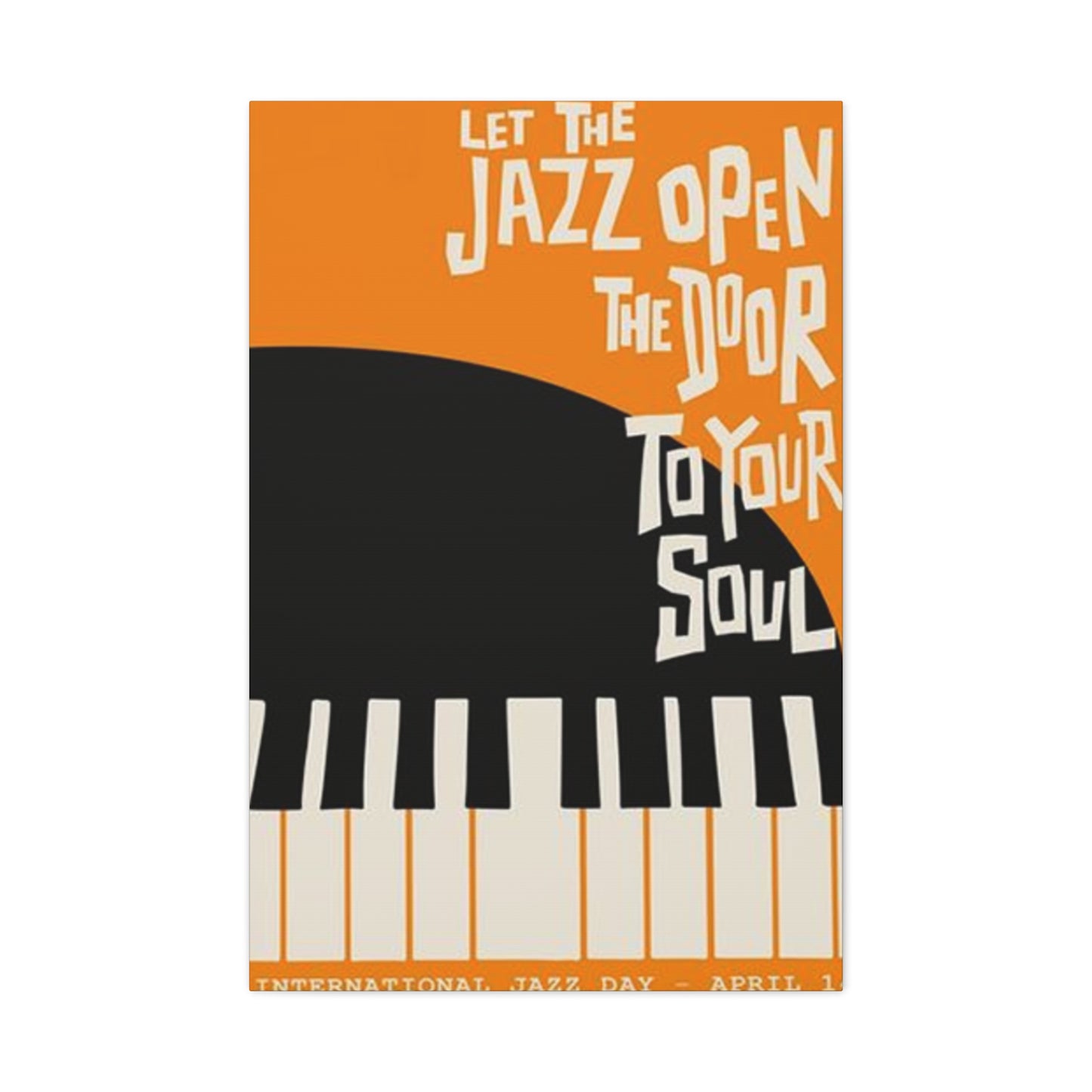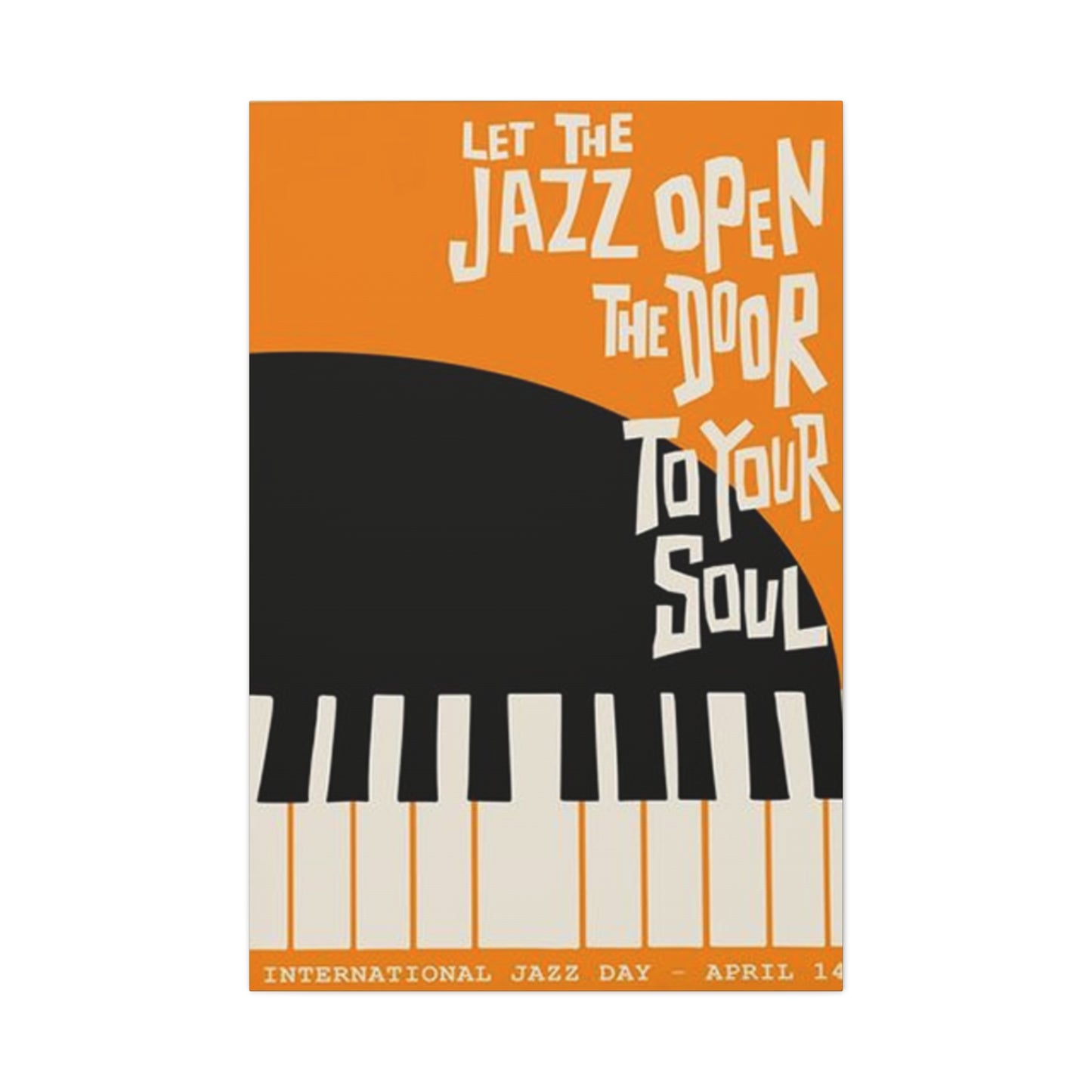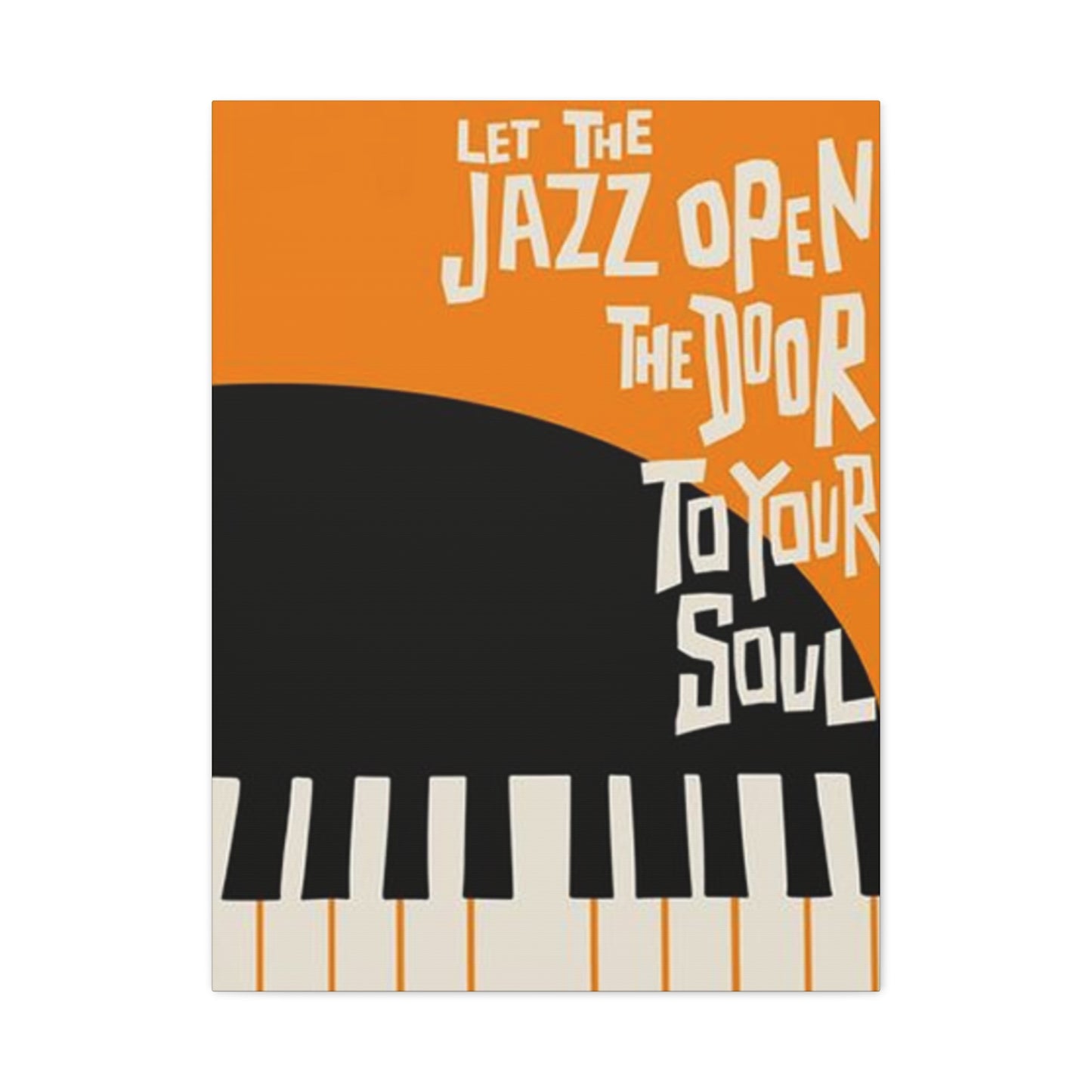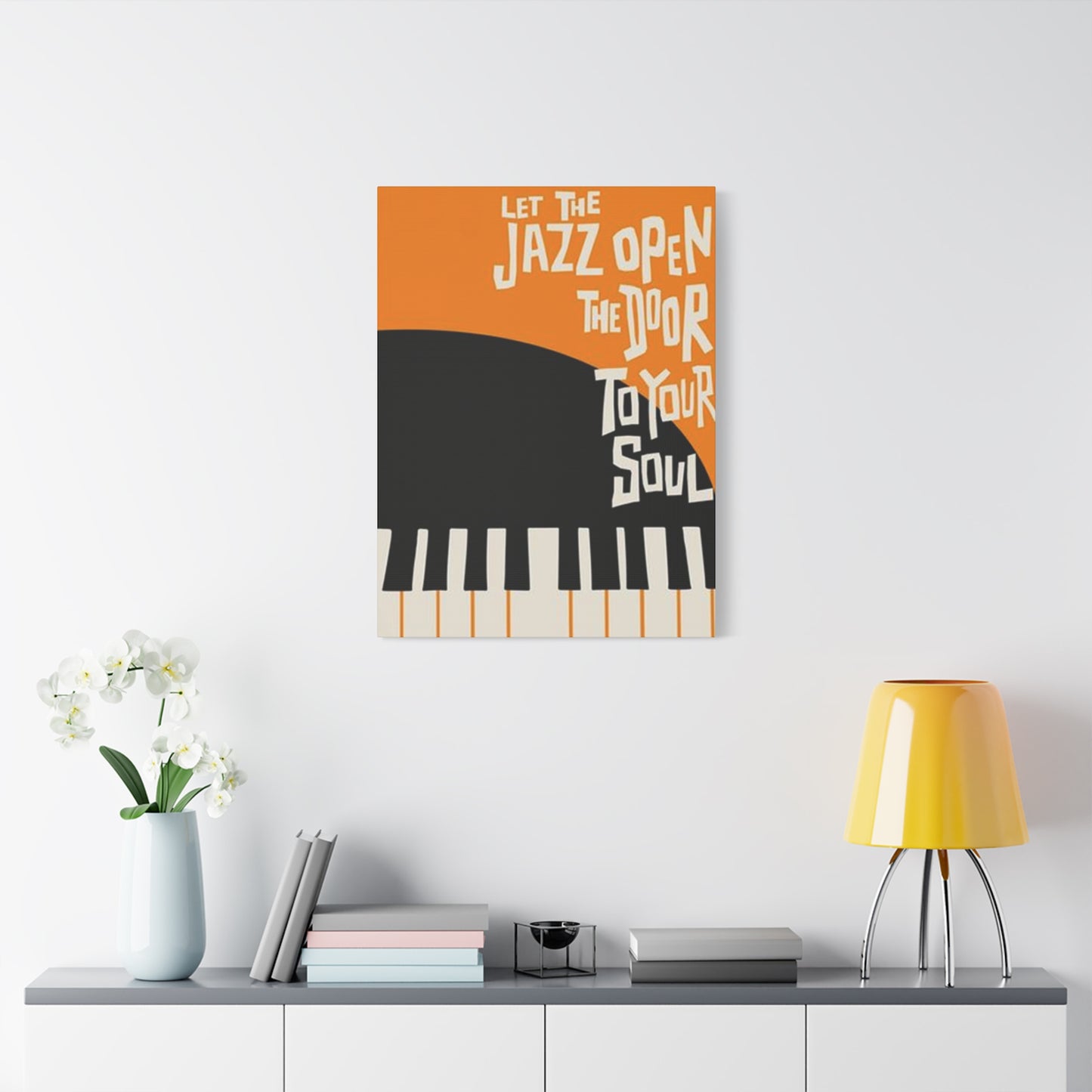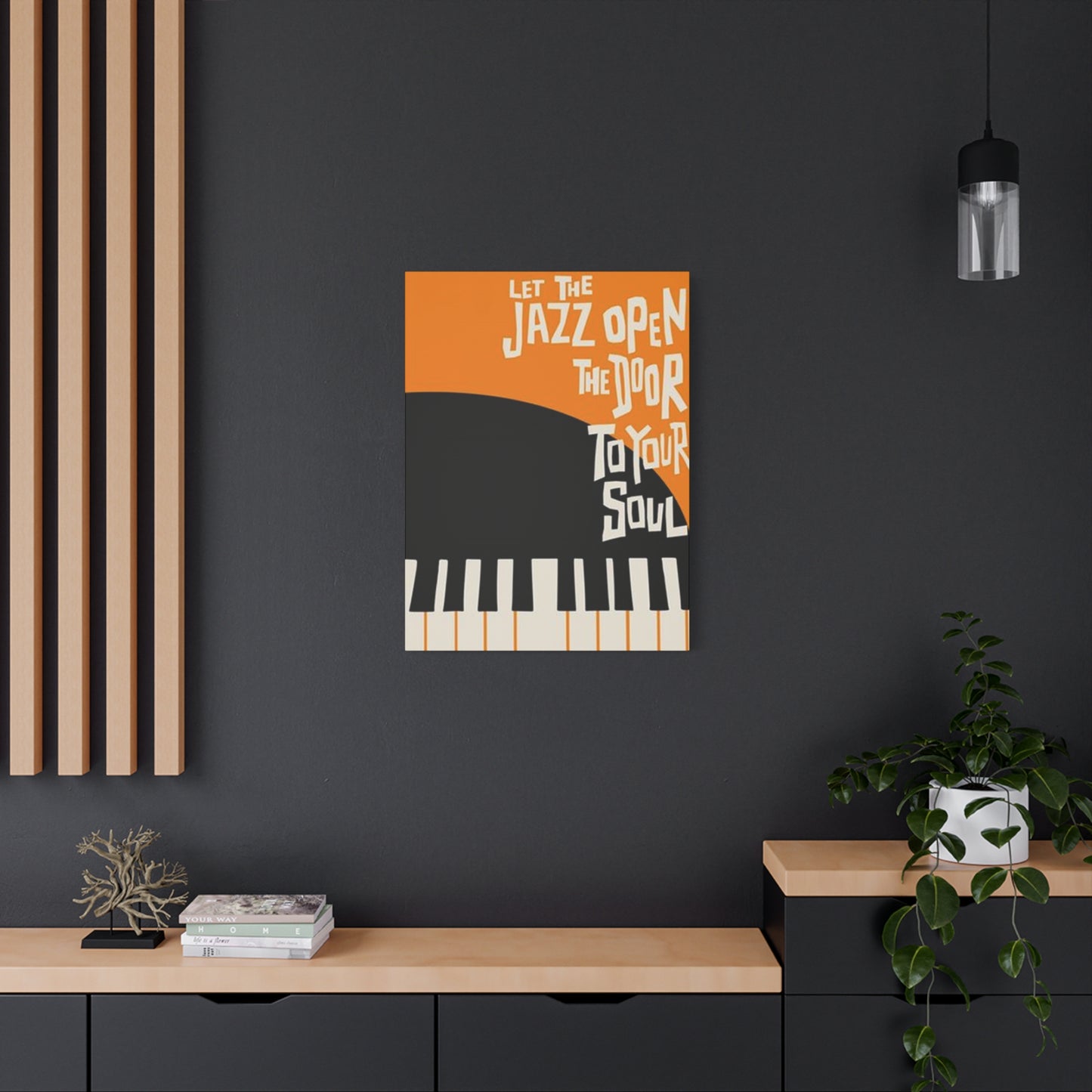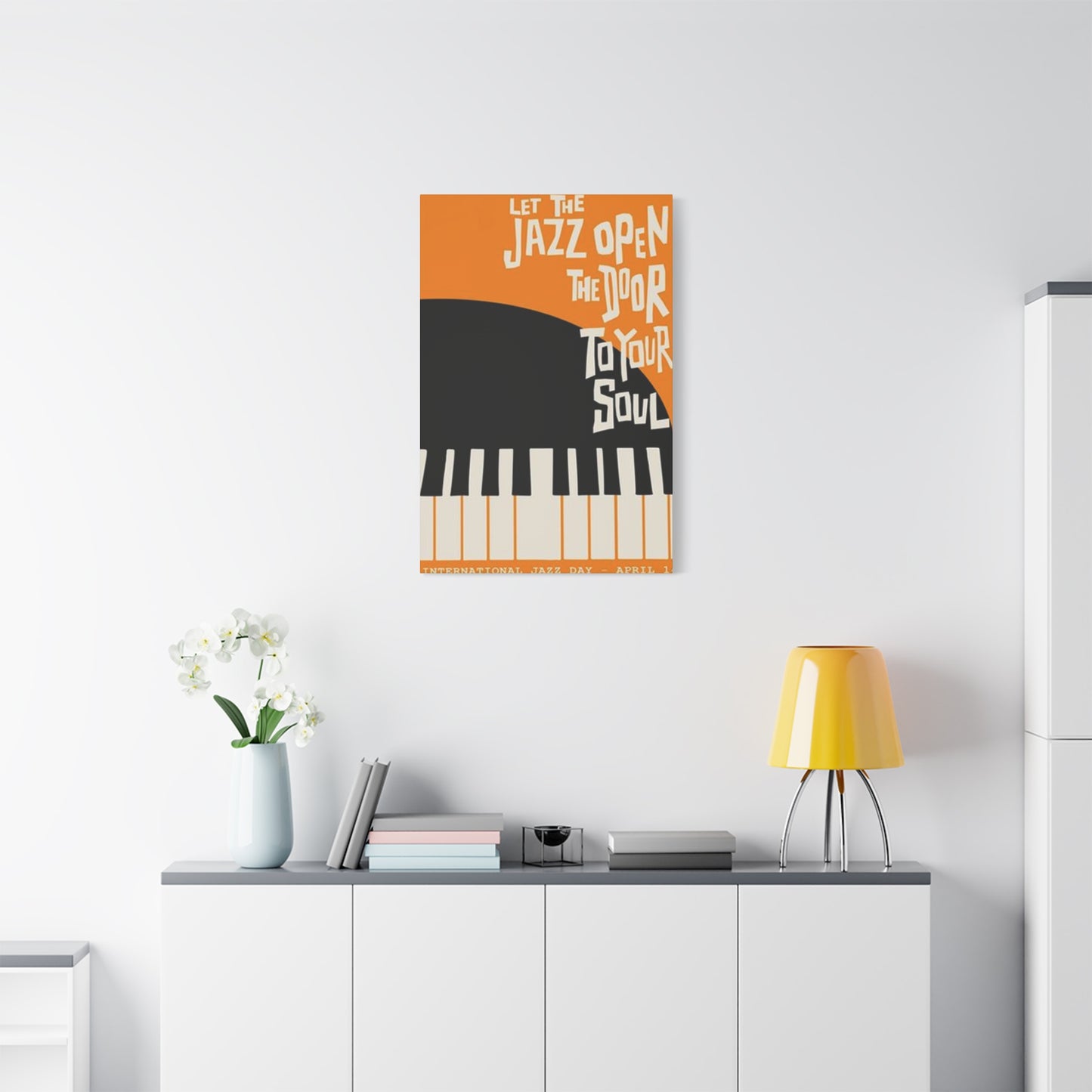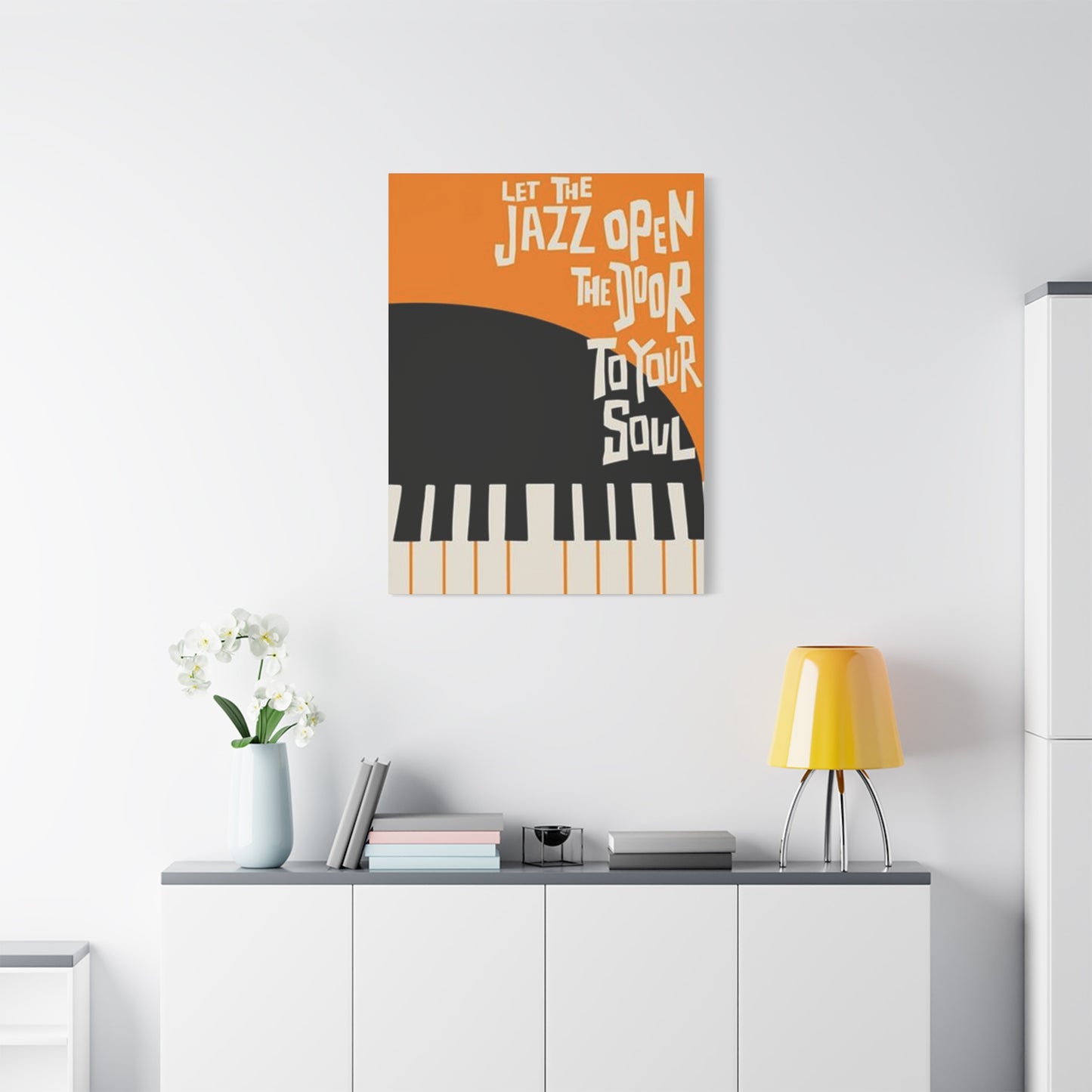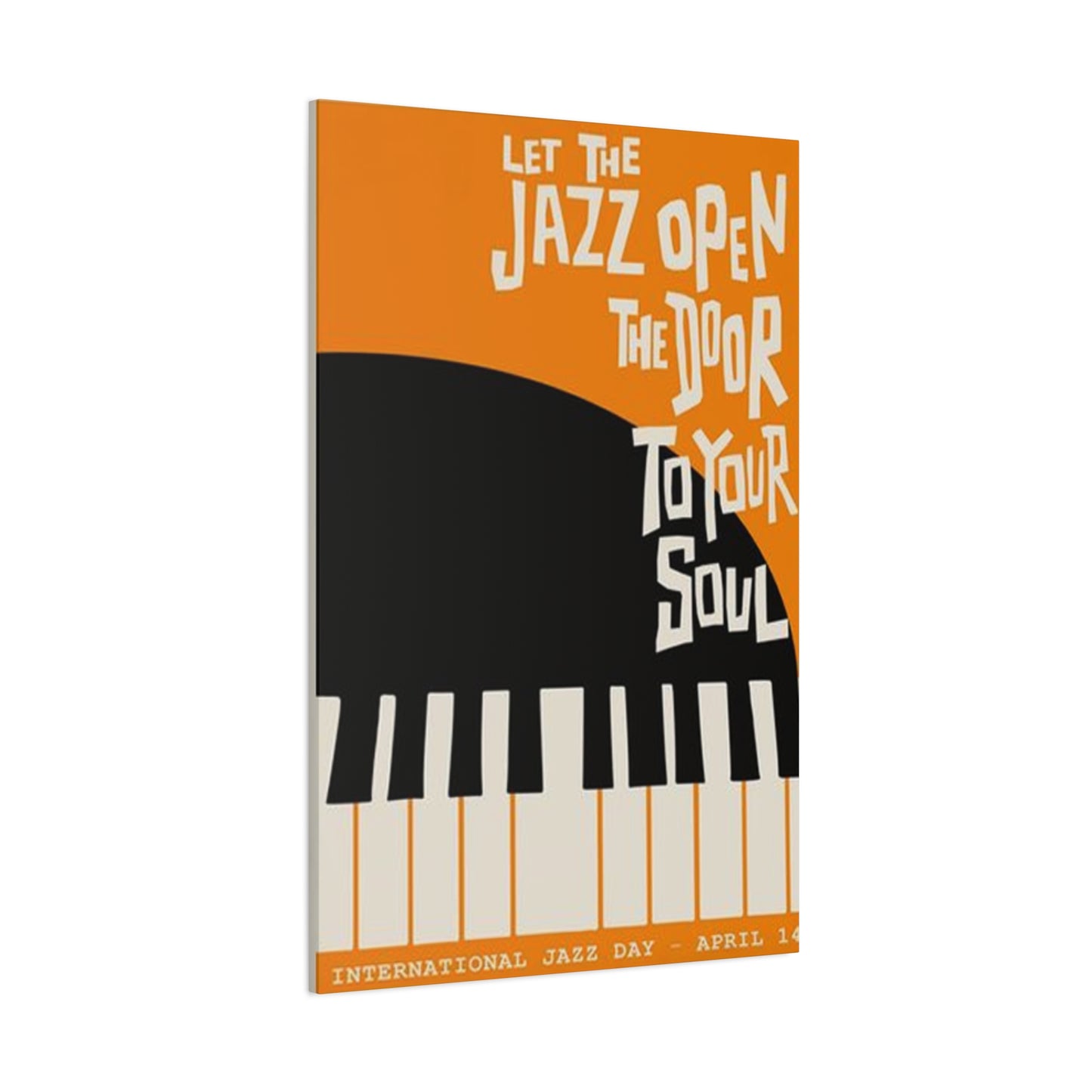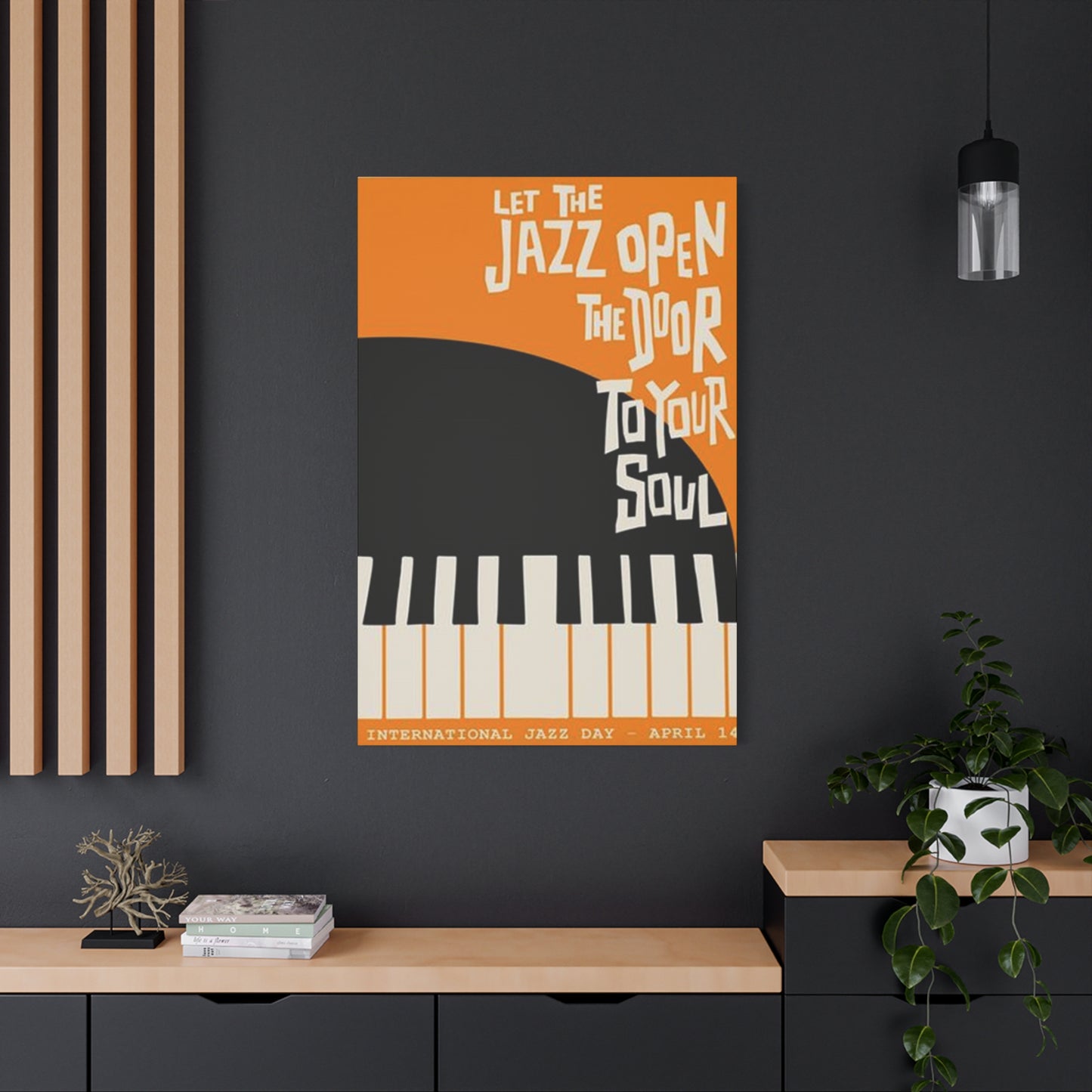International Jazz Day Wall Art & Canvas Prints
International Jazz Day Wall Art & Canvas Prints
Couldn't load pickup availability
Celebrating International Jazz Day Wall Art: A Creative Journey Through Musical Expression and Visual Storytelling
Jazz music has captivated audiences worldwide for over a century, and commemorating International Jazz Day Wall Art offers enthusiasts a remarkable way to honor this influential musical genre. This celebration combines visual aesthetics with rhythmic heritage, creating stunning displays that resonate with both music lovers and art collectors alike. The fusion of melodic history with contemporary design principles has given birth to an entirely new category of decorative pieces that transform living spaces into galleries celebrating America's original art form.
The Cultural Significance Behind Jazz-Inspired Decorative Pieces
The profound connection between jazz music and visual representation stretches back decades, intertwining two distinct artistic expressions into a harmonious relationship. When musicians like Louis Armstrong, Duke Ellington, and Miles Davis revolutionized American soundscapes, artists simultaneously began capturing these sonic innovations through paint, photography, and mixed media compositions. The raw emotion conveyed through saxophone solos and trumpet calls found equivalent expression in abstract brushstrokes and bold color palettes that attempted to visualize the invisible—the feeling of pure musical improvisation.
Jazz emerged from African American communities in New Orleans during the late nineteenth and early twentieth centuries, carrying with it stories of struggle, triumph, celebration, and resilience. This rich cultural tapestry provides endless inspiration for visual artists seeking to honor the genre's legacy. When we examine International Jazz Day Wall Art, we're not merely looking at decorative items; we're witnessing visual narratives that pay tribute to cultural movements, legendary performers, and the enduring spirit of creative freedom that defines jazz itself.
The decision by UNESCO to establish April 30th as a day dedicated to this musical tradition reflects its global importance. Artists worldwide have responded by creating pieces that capture jazz's essence—its spontaneity, its dialogue between musicians, its ability to transcend linguistic and cultural barriers. These artworks serve as permanent reminders of temporary moments, freezing improvised solos and unrepeatable performances into tangible forms that generations can appreciate.
Exploring Various Styles and Artistic Approaches
The diversity of jazz music itself—from bebop to smooth jazz, from fusion to traditional New Orleans style—is mirrored in the vast array of artistic interpretations available to collectors and decorators. Some artists favor photorealistic portraits of jazz legends, capturing every wrinkle and expression line that tells stories of late-night jam sessions and decades of dedication to craft. These pieces often utilize dramatic lighting reminiscent of smoky club environments where jazz first flourished, creating atmospheric presentations that transport viewers to another era.
Abstract interpretations represent another popular approach, where artists translate musical concepts into visual language. Swirling colors might represent the flowing progression of a saxophone improvisation, while sharp geometric patterns could symbolize the syncopated rhythms that characterize jazz drumming. These pieces invite viewers to experience jazz visually, creating personal interpretations just as listeners might hear different emotions in the same musical composition.
Minimalist designs have gained considerable popularity among modern collectors who appreciate clean aesthetics while still honoring jazz heritage. These pieces might feature simple silhouettes of instruments against neutral backgrounds, elegant typography showcasing legendary album titles or musician names, or subtle color gradients that evoke the emotional progression of a classic jazz performance. The minimalist approach proves that powerful tributes need not be complex or overwhelming.
Vintage-inspired artwork taps into nostalgia, replicating the aesthetic of mid-century concert posters, album covers, and promotional materials. These pieces often incorporate distressed textures, retro color schemes, and typography styles characteristic of jazz's golden age. Collectors drawn to retro design find these pieces particularly appealing as they seamlessly blend with vintage furniture and classic interior design schemes while celebrating musical heritage.
Collage compositions bring together multiple elements—photographs, sheet music fragments, ticket stubs, and textural materials—creating layered narratives about jazz history and personal connections to the music. These multidimensional pieces offer visual interest from multiple viewing angles and distances, revealing new details upon closer inspection. The collage technique mirrors jazz's own nature as a collaborative art form where individual contributions blend into cohesive wholes.
Materials and Production Methods for Quality Pieces
The physical substrate upon which jazz imagery appears significantly impacts both aesthetic presentation and longevity. Canvas remains a traditional favorite, offering texture and depth that enhances painted or printed images. Gallery-wrapped canvas, where the image continues around the edges, provides a finished appearance without requiring additional framing. This presentation style has become increasingly popular for contemporary spaces where clean lines and minimal visual interruption are desired.
Metal prints represent a modern alternative that delivers striking vibrancy and contemporary appeal. The dye-sublimation process infuses colors directly into specially coated aluminum, creating luminous, waterproof surfaces with remarkable depth. The reflective quality of metal adds dimension to jazz imagery, making colors appear more saturated and blacks more intense. These prints are particularly suitable for modern interiors and commercial spaces where durability and easy maintenance are priorities.
Wood panel prints bring warmth and organic texture to jazz-themed artwork. The natural grain patterns visible through printed images add character and create pieces that feel artisanal and handcrafted. Different wood types—from light birch to rich walnut—offer varied aesthetic options that complement different interior color schemes. Wood panels work exceptionally well for rustic, industrial, or eclectic design styles where natural materials are emphasized.
Acrylic glass mounting creates a sleek, gallery-quality presentation with impressive depth and clarity. The transparent acrylic layer positioned in front of the image produces a three-dimensional floating effect while protecting the print from environmental damage. Light interacts with these pieces dynamically throughout the day, creating subtle visual changes as viewing angles and lighting conditions shift. This mounting method is ideal for statement pieces in prominent locations.
Traditional paper prints offer accessibility and versatility, especially when paired with quality matting and framing. Fine art papers with archival properties ensure longevity, while various surface finishes—from matte to glossy—allow customization based on personal preference and lighting conditions in the display environment. Paper prints provide budget-conscious options without sacrificing visual impact when properly presented.
Prominent Musicians and Iconic Imagery
Certain performers have become so synonymous with jazz that their images alone evoke the entire genre's spirit. Louis Armstrong's charismatic smile and trumpet raised in performance has been immortalized countless times, symbolizing jazz's joyful, communicative nature. His influence extends beyond music into visual culture, making his likeness instantly recognizable even to those unfamiliar with his recordings. Artwork featuring Armstrong typically emphasizes his expressive face and the intimate connection between musician and instrument.
Miles Davis represents another iconic figure whose cool sophistication and constant musical evolution make him a favorite subject for visual artists. Photographs from his various career phases—from the Birth of the Cool era through his electric period—offer diverse aesthetic options. Davis's striking features and fashionable presentation provide strong visual foundations, while his revolutionary contributions to jazz give these pieces cultural weight beyond mere decoration.
John Coltrane's spiritual intensity and transcendent saxophone playing inspire artwork that often takes on reverential qualities. Pieces featuring Coltrane frequently emphasize his focused concentration during performance, eyes closed in meditative communion with his instrument. The mystical, searching quality of his music translates into visual compositions that suggest depth, contemplation, and spiritual seeking.
Ella Fitzgerald's grace, technical mastery, and warm stage presence have made her another beloved subject for jazz-inspired artwork. Visual tributes to the "First Lady of Song" often capture her mid-performance, mouth open in song, conveying the power and beauty of her legendary voice. These pieces celebrate not only her musical contributions but also her role as a trailblazer for women in jazz.
Thelonious Monk's angular compositions and unique piano style have visual equivalents in artwork featuring his distinctive profile and characteristic hat. His music's unexpected harmonies and playful dissonance inspire visual interpretations that embrace asymmetry, bold patterns, and unconventional compositions. Monk-themed pieces often appeal to collectors who appreciate jazz's more experimental dimensions.
Beyond individual performers, certain venues and moments have achieved iconic status. New York's Village Vanguard, Chicago's Green Mill, and New Orleans' Preservation Hall appear frequently in jazz-themed artwork, representing the physical spaces where this music has flourished. Historic photographs of packed clubs with audiences transfixed by performances capture the communal experience of live jazz in ways that resonate with contemporary viewers.
Color Theory and Visual Composition Strategies
The color palettes employed in International Jazz Day Wall Art carry significant psychological and aesthetic weight. Deep blues and purples frequently dominate compositions, evoking the nocturnal environments where jazz traditionally thrived. These colors suggest sophistication, mystery, and the after-hours world of nightclub performances. When combined with warm accent colors like gold, amber, or rust, these cool tones create visual tension that mirrors the dynamic interplay between musicians during improvisation.
Bold reds and oranges bring energy and passion to jazz-themed pieces, representing the music's emotional intensity and its capacity to stir powerful feelings. These warm, aggressive colors work particularly well for pieces depicting energetic performances or celebrating jazz's more fiery moments. When balanced with neutral tones, these vibrant hues create focal points that draw viewers' attention without overwhelming spaces.
Monochromatic schemes offer elegant sophistication, particularly when rendering classic photography or creating pieces with timeless appeal. Black and white compositions emphasize form, contrast, and emotional content without the distraction of color, focusing attention on facial expressions, instrumental details, and compositional structure. Sepia-toned variations add warmth while maintaining the vintage quality that appeals to traditionalists and history enthusiasts.
Complementary color relationships—such as blue-orange or purple-yellow combinations—create visual vibrancy through natural color contrasts. These pairings generate optical energy that captures attention while remaining aesthetically pleasing. When applied to jazz imagery, complementary schemes can symbolize the tension and resolution inherent in jazz harmony, where dissonance and consonance coexist and alternate.
The strategic use of negative space in composition allows focal elements to breathe and prevents visual overcrowding. Jazz itself relies heavily on the spaces between notes, the silence that gives meaning to sound. Artwork that incorporates generous negative space often feels more sophisticated and allows key elements—a musician's silhouette, an instrument's outline, or a few carefully chosen words—to achieve maximum impact without competing for attention.
Layering and depth create visual interest by suggesting multiple planes of focus within a single piece. Foreground elements might appear sharp and detailed, while background components remain blurred or faded, creating the optical depth characteristic of photography. This technique helps establish visual hierarchy and guides viewers' eyes through the composition in intended sequences, much as a jazz arrangement might emphasize certain instruments at particular moments.
Sizing Considerations for Different Spaces
Selecting appropriate dimensions requires careful consideration of both the display environment and the artwork's visual impact. Oversized statement pieces—those exceeding forty inches in any direction—command attention and function as room centerpieces. These large-scale works are ideal for spacious living areas, above substantial furniture like sectional sofas, or in commercial environments such as restaurants, hotels, or music venues where bold visual statements support branding and atmosphere.
Medium-sized pieces ranging from twenty to forty inches offer versatility, working well in most residential settings without requiring extensive wall space. These dimensions suit dining rooms, bedrooms, offices, and medium-sized living areas. Multiple medium pieces can be arranged in gallery configurations, creating dynamic visual narratives that tell more comprehensive stories than single artworks might achieve alone.
Smaller accent pieces under twenty inches provide finishing touches and work exceptionally well in vignettes, hallway displays, or spaces where wall area is limited. These compact artworks allow collectors to incorporate jazz imagery into bathrooms, entryways, closets, and other overlooked spaces. Small pieces also offer accessible entry points for beginning collectors or those decorating within budget constraints.
Proportional relationships between artwork and furniture or architectural elements significantly impact visual harmony. A general guideline suggests wall art should span approximately two-thirds to three-quarters the width of furniture beneath it. Following this principle creates balanced visual relationships that feel intentional rather than haphazard. However, rules can be broken deliberately for dramatic effect, such as hanging an unexpectedly small piece above a large sofa to create intriguing contrast.
Ceiling height influences optimal artwork placement. Standard eight-foot ceilings require different approaches than the generous vertical space found in lofts or historic buildings with ten or twelve-foot ceiling heights. Taller walls can accommodate vertical arrangements of multiple pieces or extra-large single works that would overwhelm rooms with lower ceilings. The center of artwork should typically align with average eye level—approximately sixty inches from the floor—though this guideline adjusts based on viewing context and whether people will primarily see the art while standing or seated.
Creating Gallery Walls with Thematic Cohesion
Multiple pieces arranged intentionally across a wall section create visual narratives more complex than individual artworks permit. When curating gallery walls around jazz themes, consider mixing formats and sizes while maintaining unifying elements like consistent color schemes, complementary framing, or shared subject matter. A collection might combine musician portraits, instrument close-ups, and abstract interpretations of musical concepts, all connected through similar tonal ranges or style consistency.
The grid arrangement offers clean, contemporary appeal through uniform spacing and aligned edges. This symmetrical approach works well with pieces of identical or proportional sizes, creating order and predictability. Grid layouts suit minimalist or modern interiors where structure and organization are valued. Within this framework, content can vary while the consistent presentation maintains visual coherence.
Salon-style arrangements embrace organized chaos, filling wall sections completely with pieces of varying sizes in seemingly casual configurations. Despite appearing spontaneous, successful salon walls require careful planning to achieve balanced distribution of visual weight, color, and breathing room. This approach evokes the packed walls of traditional art salons and contemporary gallery spaces, suggesting abundant enthusiasm for the subject matter. Beginning with the largest piece as an anchor, smaller works can be arranged around this focal point, adjusting spacing and placement until the composition feels balanced.
Linear arrangements—single horizontal rows of pieces at consistent height—create rhythmic patterns reminiscent of musical measures. This approach works particularly well in hallways, above long pieces of furniture, or in spaces where vertical wall real estate is limited but horizontal space is abundant. Varying the spacing between pieces can create visual rhythm, with closer groupings suggesting intensity or connection, while wider gaps imply pause or separation.
Asymmetrical balance achieves visual equilibrium without mirroring or uniformity. This approach requires intuitive understanding of visual weight—how size, color intensity, and subject complexity affect perceived heaviness. A large, pale piece might balance several smaller, darker works on the opposite side of a composition. Asymmetrical arrangements feel dynamic and contemporary, avoiding the static quality that perfect symmetry can sometimes create.
Frame Selection and Presentation Alternatives
Frames serve both protective and aesthetic functions, dramatically influencing how artwork integrates with surrounding décor. Traditional wood frames bring warmth and classic appeal, with different wood tones offering varied aesthetic effects. Dark walnut or espresso frames suggest sophistication and seriousness, appropriate for formal spaces or pieces featuring legendary performers. Lighter woods like oak, maple, or natural pine create casual, accessible feelings suitable for relaxed environments and contemporary spaces that emphasize natural materials.
Metal frames deliver sleek modernity and industrial edge. Thin aluminum or steel frames provide minimal visual interruption, allowing artwork to take center stage while adding just enough definition to separate pieces from walls. Matte black metal frames have achieved particular popularity in contemporary design, offering versatility that complements nearly any color scheme while adding graphic punch. Brass or gold-toned metal frames introduce luxury and vintage appeal, particularly appropriate for Art Deco-influenced jazz imagery or pieces celebrating the genre's golden age.
Floating frames create subtle three-dimensional effects by suspending artwork slightly away from walls with visible gaps between image edges and frame borders. This presentation adds architectural interest and contemporary sophistication while allowing artwork to appear as if hovering. Floating frames work exceptionally well with canvas or wood panel prints where the image wraps around edges, creating appealing reveals from side angles.
Frameless mounting options have gained popularity for their clean, contemporary aesthetic. Metal clips, clear acrylic standoffs, or magnetic hanging systems secure prints directly to walls without surrounding borders. This minimalist approach places complete focus on imagery without decorative distraction. Frameless presentation particularly suits modern, industrial, or Scandinavian-influenced interiors where simplicity reigns. However, this approach requires pristine print edges and careful handling to prevent damage.
Matting within frames adds dimensionality and visual breathing room around images. Generously proportioned mats create gallery-quality presentation that elevates even modestly sized prints. Mat color selection significantly impacts overall appearance—neutral white or cream mats offer timeless versatility, while colored mats can pull accent hues from artwork or coordinate with room color schemes. Double or triple matting with layered colors adds sophisticated detail and increased depth.
Placement Strategies Throughout Living Environments
Living rooms offer prime display opportunities for jazz-themed artwork, as these communal gathering spaces naturally accommodate visual focal points. Above the sofa represents the most traditional placement, where a substantial single piece or curated grouping commands attention without competing with other room elements. The connection between jazz's social nature and the living room's function as a social hub creates natural thematic alignment, making these spaces ideal for celebrating musical heritage.
Bedroom settings benefit from artwork that promotes relaxation while reflecting personal passions. Jazz pieces with calmer color palettes and serene compositions—perhaps featuring instrumental close-ups or abstract interpretations of melodic themes—support restful atmospheres without sacrificing personal expression. Placement above headboards creates natural focal points visible upon entering rooms, while artwork opposite beds provides contemplative viewing from reclined positions.
Home offices and creative workspaces gain inspiration from jazz imagery that celebrates improvisation, creativity, and artistic excellence. Pieces featuring musicians deeply focused in performance can motivate productivity and remind workers to approach tasks with similar dedication. The historical connection between jazz and American innovation makes these pieces particularly appropriate for entrepreneurial and creative professional settings.
Dining spaces present opportunities to enhance social experiences with artwork that stimulates conversation and creates ambiance. Jazz's historical association with dining establishments—from supper clubs to contemporary restaurants featuring live performances—makes these pieces naturally suited to eating areas. The communal nature of both shared meals and jazz performances creates thematic harmony that enhances dining experiences.
Hallways and transitional spaces, often overlooked in decorating plans, transform into miniature galleries with properly scaled jazz artwork. These passages provide opportunities to display collections or create narrative sequences that unfold as people move through homes. Smaller pieces work well in these narrower spaces, where oversized works might overwhelm or obstruct flow.
Music rooms, entertainment spaces, or areas housing instruments or audio equipment find perfect companions in jazz-themed wall décor. Creating dedicated spaces that honor musical appreciation reinforces the importance of these pursuits within household priorities. Surrounding musical instruments with related artwork establishes these areas as intentional shrines to musical passion rather than mere storage for equipment.
Historical Context and Documentary Photography
Documentary photographs capturing authentic moments from jazz history carry particular significance for serious collectors and historians. These images preserve fleeting instants that would otherwise exist only in memory and sound recordings. Photographs of musicians backstage, in recording studios, traveling between venues, or relaxing between sets offer intimate glimpses into lives dedicated to artistic pursuit. The candid, unposed quality of documentary work provides authenticity that staged photography cannot replicate.
Concert and festival photography freezes performances at their peaks—the moment a trumpet player hits a high note, the instant a drummer's sticks blur in rapid-fire rhythms, the second a bass player's fingers pluck a string. These dynamic captures convey energy and motion within static images, allowing viewers to almost hear the music depicted. The best performance photography balances technical excellence with emotional resonance, documenting not just what happened but how it felt.
Street photography depicting jazz culture in urban environments provides social and historical context for the music. Images of club exteriors with marquees advertising performers, crowds lined up for admission, or musicians carrying instrument cases through city streets document the infrastructure and community surrounding jazz. These photographs remind viewers that jazz existed within specific places and times, shaped by social conditions and urban geography.
Recording session photography offers glimpses into creative processes often hidden from public view. Images showing musicians listening to playback, making notations on sheet music, or engaged in intense discussions with producers and fellow performers reveal the collaborative work behind finished recordings. These behind-the-scenes moments appeal to those interested in creative processes and the less glamorous but essential work of developing musical ideas into permanent records.
Civil rights era documentation places jazz within broader social movements and historical contexts. Photographs showing integrated audiences, musicians participating in protests or benefit concerts, and performers using their platforms to address social issues remind viewers that jazz existed within—and sometimes actively challenged—complex social circumstances. These images carry additional weight as historical documents beyond their artistic merit.
Contemporary Artists and Fresh Perspectives
Modern visual artists continue reimagining jazz imagery for contemporary audiences, bringing fresh perspectives to established subjects. Some creators combine traditional techniques with digital manipulation, layering photographs with painted elements or graphic design components. These hybrid approaches yield pieces that honor photographic documentation while adding interpretive elements that emphasize emotional content or symbolic meaning.
Street art influences appear in jazz-themed pieces that incorporate graffiti aesthetics, spray paint techniques, and urban visual languages. These works connect jazz's historical role in African American urban culture with contemporary street art movements, creating continuity between past and present forms of creative resistance and cultural expression. The raw, immediate quality of street-inspired artwork captures something essential about jazz's improvisational spirit and its roots in vernacular culture.
Typography-focused designs transform song lyrics, album titles, musician quotes, or jazz terminology into visual compositions. These text-based pieces appeal to those who appreciate clean design and literary dimensions of musical culture. Creative typography treatments can evoke musical qualities—flowing scripts suggesting melodic lines, sharp angles representing staccato rhythms, or spacing variations creating visual syncopation.
Illustration and digital art offer unlimited creative possibilities unbound by photographic reality. Artists can create idealized portraits, surreal compositions merging multiple elements, or completely abstract interpretations of musical concepts. The flexibility of illustration permits color combinations, perspectives, and spatial relationships impossible in photography, allowing artists to visualize internal experiences of music rather than external appearances.
Mixed media collage work incorporating three-dimensional elements brings tactile qualities to wall art. Some artists embed actual instrument parts—old saxophone keys, drum heads, trumpet valves—into compositions, creating pieces that bridge visual and musical worlds. Others layer various papers, fabrics, and found materials to build complex surfaces rich with texture and visual information revealed gradually through extended viewing.
Caring for and Preserving Artwork
Proper handling prevents damage that accumulates through careless interactions. Always grip frames rather than artwork surfaces when moving pieces. Clean hands or cotton gloves protect against oil transfer from skin that can cause deterioration over time. When hanging artwork, ensure secure mounting with appropriate hardware rated for the piece's weight. Wall anchors and proper screws prevent catastrophic falls that could destroy both artwork and the wall surfaces behind them.
Environmental conditions significantly impact artwork longevity. Direct sunlight causes fading in prints and photographs, with some media proving more vulnerable than others. Ultraviolet-filtering glass or acrylic glazing provides protection when pieces must hang in sun-exposed locations, though repositioning to shadier walls offers more comprehensive protection. Indirect lighting from adjustable fixtures allows artwork to be properly illuminated without harmful exposure.
Humidity control prevents warping, mold growth, and adhesive failure. Canvas can sag or tighten with humidity fluctuations, potentially cracking paint or causing stretcher bar impressions. Paper-based artwork absorbs moisture, leading to rippling, foxing, or mold formation in damp conditions. Maintaining consistent humidity levels between forty and fifty percent protects most artwork types. Dehumidifiers help in damp climates, while humidifiers prevent excessive dryness in arid regions or during winter heating seasons.
Temperature stability matters as much as humidity control. Extreme heat can cause adhesives to fail, while cold temperatures may make materials brittle. Avoid hanging valuable artwork directly above heating sources, fireplaces, or near exterior doors that allow temperature fluctuations. Consistent conditions between sixty-five and seventy-five degrees Fahrenheit suit most artwork.
Regular cleaning prevents dust accumulation that dulls appearance and potentially harbors moisture or pests. Microfiber cloths gently remove dust from frames and protective glazing without scratching surfaces. Avoid household cleaners that might damage finishes or leave residue. For artwork behind glass, occasional cleaning with proper glass cleaner applied to the cloth rather than directly on the surface prevents liquid intrusion between glass and artwork.
Professional conservation becomes necessary when damage occurs or preventive measures are required for particularly valuable pieces. Conservators possess specialized knowledge and materials for stabilizing, cleaning, and repairing artwork. While conservation services represent significant investment, they preserve value and extend lifespan for pieces of financial or sentimental importance. Consulting conservators before attempting DIY repairs prevents inadvertent damage from well-intentioned but improper interventions.
Budget-Conscious Collection Building
Entering the world of jazz-themed wall décor need not require substantial financial investment. Print-on-demand services offer access to countless designs at modest prices, allowing beginners to experiment with different styles and sizes before committing to more expensive pieces. While these affordable options may lack the longevity and quality of higher-end alternatives, they serve important purposes for renters, students, or anyone decorating temporary living situations.
Rotating displays keep environments fresh without continuous purchasing. Seasonally changing artwork or periodically swapping pieces between rooms creates novelty and renewed appreciation for existing collections. This practice also allows thematic focus—perhaps featuring bebop artists during certain months, then highlighting vocal jazz at other times. Storage for rotated pieces must protect them from damage; flat storage in archival boxes or dedicated art racks prevents bending or environmental exposure.
Thrift stores, estate sales, and vintage shops occasionally yield surprising finds for patient hunters willing to search through miscellaneous artwork. Original vintage posters, framed prints, or unique pieces by unknown artists can be discovered at fraction of retail prices. While finding jazz-specific items requires luck and persistence, the hunt itself becomes an enjoyable hobby for enthusiasts who appreciate the thrill of discovery.
Emerging artist support provides dual benefits—acquiring original artwork at accessible prices while helping creators build careers. Many talented illustrators, photographers, and designers offer reasonably priced work through online platforms, local art fairs, or social media. Purchasing directly from artists ensures they receive fair compensation while giving collectors more affordable access to original pieces. Building relationships with emerging creators may also yield commissioned work tailored to specific preferences.
DIY projects allow creative individuals to produce personalized jazz-themed artwork. Printing high-resolution public domain photographs, painting original interpretations, or creating mixed media compositions transforms raw materials into unique pieces. While DIY efforts require time and some skill development, the results carry special significance as personal creations. Online tutorials provide guidance for various techniques, from basic framing to complex mixed media processes.
Prioritizing quality over quantity builds more satisfying collections than acquiring numerous mediocre pieces. A single exceptional work creates greater impact than a wall full of forgettable prints. Patient collecting—waiting for the perfect piece rather than settling for immediately available options—ultimately yields curated displays that truly reflect personal taste and maintain their appeal through years of daily viewing.
Celebrating Global Jazz Traditions
While jazz originated in American South, its influence spread globally, with regional interpretations developing distinctive characteristics. International Jazz Day Wall Art can explore these worldwide manifestations, celebrating the genre's universal appeal and local adaptations. Brazilian bossa nova, Afro-Cuban jazz, European gypsy jazz, and Japanese jazz fusion each offer unique visual possibilities that expand beyond American-centric perspectives.
Latin jazz imagery often emphasizes rhythm and color, reflecting the percussive complexity and vibrant energy of Caribbean and South American influences. Artwork depicting conga drums, timbales, and other percussion instruments highlights the polyrhythmic foundations of these styles. The visual language often incorporates bold colors, dynamic compositions, and tropical or urban Latin American settings that contextualize musical innovations.
European jazz traditions bring different aesthetics and cultural references. Photographs or illustrations featuring legendary European festivals like Montreux, North Sea Jazz, or Copenhagen Jazz Festival document the continent's enthusiastic embrace of American musical innovations. European jazz clubs—from Paris caverns to London basement venues—created distinctive performance environments with their own visual character. Artwork celebrating European contributions acknowledges jazz's transformation into a truly international artistic language.
African jazz reconnects the music with one of its foundational influences, bringing contemporary African innovations full circle. Visual representations might emphasize connections between African rhythmic traditions and jazz development, or celebrate contemporary African jazz innovators who blend traditional instruments with jazz harmonic concepts. These pieces often feature vibrant patterns, traditional textile designs, or African musical instruments alongside conventional jazz elements.
Asian jazz scenes have produced remarkable musicians and distinctive performance venues. Japanese jazz cafes—dedicated listening spaces with exceptional sound systems—represent unique cultural phenomena deserving visual documentation. The precision and technical mastery characteristic of some Japanese jazz players, combined with aesthetics drawn from traditional Japanese arts, create fascinating fusion possibilities for visual artists exploring cross-cultural jazz expressions.
Seasonal and Occasional Display Concepts
While International Jazz Day Wall Art works beautifully as permanent decoration, some collectors enjoy rotating displays that align with specific dates or seasons. April 30th—the official International Jazz Day designation—offers obvious opportunity for special emphasis on jazz-themed décor. Hosting listening parties, jam sessions, or themed gatherings around this date makes jazz artwork central to celebration aesthetics, reinforcing the occasion's cultural significance.
Holiday decorating can incorporate jazz elements for those who celebrate both musical heritage and seasonal traditions. Winter holiday décor might feature artwork depicting classic Christmas jazz albums, musicians performing holiday standards, or vintage concert posters from holiday performances. This approach personalizes seasonal decoration beyond generic themes while maintaining festive spirit.
Black History Month provides appropriate context for emphasizing jazz's African American origins and celebrating the Black musicians who created and developed the genre. Temporarily highlighting relevant artwork educates household members and guests about cultural history while honoring specific contributions. This intentional connection between musical and social history deepens appreciation beyond mere aesthetic enjoyment.
Personal anniversaries and commemorations gain meaning through musical connections. Artwork commemorating legendary performances on specific dates, album release anniversaries, or musician birthdays can mark time's passage for dedicated enthusiasts. Collectors might acquire pieces connected to personally significant concerts attended or albums discovered during formative life moments, creating private commemorative meanings.
Seasonal color palettes naturally align with certain jazz imagery. Autumn's warm earth tones complement sepia-toned vintage photography or artwork featuring warm wood instruments. Summer's bright energy suits colorful abstract pieces or vibrant festival photography. Winter's cool palette works beautifully with blue-dominant nightclub scenes or monochromatic prints. Spring renewal aligns with energetic bebop imagery or flowering of new jazz movements. These seasonal rotations keep visual environments dynamic while honoring continuous love for jazz traditions.
Commissioning Custom Artwork from Professional Creators
Original commissioned pieces offer maximum personalization, allowing collectors to collaborate with artists on specific visions. Finding the right artist requires researching portfolios, reviewing previous jazz-related work, and assessing whether their style aligns with desired outcomes. Many artists showcase work online through personal websites or portfolio platforms where potential clients can evaluate technical skill, artistic perspective, and range of capabilities.
Initial consultations establish expectations, discuss concepts, review timelines, and negotiate pricing. Clear communication prevents misunderstandings that could result in disappointing outcomes or disputes. Discussing reference materials—specific photographs, color preferences, size requirements, and intended display locations—helps artists understand what clients envision. Reviewing preliminary sketches or digital mockups before final execution allows adjustment opportunities without wasting artists' time on unwanted directions.
Pricing for commissioned work reflects numerous factors: artist experience and reputation, piece complexity, size, materials, and market demand for their work. Emerging artists charge less than established names, making commissioned work more accessible to average collectors. Understanding that artists' fees represent compensation for years of skill development, creative vision, and labor helps clients appreciate appropriate pricing structures. Attempting to undervalue artistic work disrespects creators and undermines sustainable creative careers.
Contract agreements protect both parties by documenting terms, deliverables, payment schedules, and rights. Deposits—typically twenty-five to fifty percent of total cost—demonstrate commitment and fund initial material purchases. Clear cancellation policies, revision allowances, and delivery timelines prevent disputes. Copyright considerations matter; artists typically retain reproduction rights unless specific agreements transfer these to clients. Understanding who can reproduce images for prints, merchandise, or digital sharing prevents future conflicts.
Supporting local artists through commissions strengthens regional artistic communities while providing convenient access to creators. Meeting artists in person facilitates communication, allows studio visits where creative processes can be observed, and builds relationships beyond mere transactions. Local artists may also better understand regional jazz scenes, venues, or musicians, bringing authentic familiarity to their interpretations.
Commercial Spaces and Professional Environments
Restaurants, cafes, bars, and entertainment venues find particular value in jazz-themed artwork that reinforces brand identity and enhances atmosphere. Establishments serving live music naturally benefit from walls celebrating musical heritage, creating visual continuity with programming. Even venues without regular performances can establish sophisticated ambiance through thoughtful jazz-inspired décor that suggests refinement, cultural awareness, and appreciation for artistic excellence.
Hotel and hospitality settings employ artwork to create memorable guest experiences while reflecting local culture or establishing brand personality. Jazz imagery suits lobbies, restaurants, bars, and guest rooms in properties positioned as sophisticated, culturally engaged, or historically aware. Hotels in cities with significant jazz heritage—New Orleans, Chicago, Kansas City, New York—can differentiate themselves through authentic local jazz celebration rather than generic décor.
Corporate offices leverage jazz themes to communicate values like creativity, collaboration, improvisation, and innovation. Companies in creative industries find particular resonance with jazz's improvisational nature and collaborative essence. Conference rooms named for legendary musicians, hallway galleries documenting jazz history, or reception area statement pieces all contribute to workplace culture that values artistic thinking and creative problem-solving.
Medical and dental offices benefit from calming, sophisticated artwork that reduces patient anxiety while avoiding sterile institutional aesthetics. Jazz imagery—particularly pieces emphasizing instruments rather than performance intensity—provides visual interest without overwhelming nervous patients. The universal appeal of music creates neutral territory that offends no one while elevating waiting room environments beyond generic landscape prints.
Retail environments employ jazz décor to establish brand positioning and enhance customer experiences. Record stores, music equipment retailers, and vintage shops find obvious alignment with jazz imagery. However, bookstores, clothing boutiques, and lifestyle retailers also incorporate jazz themes to suggest sophistication, cultural literacy, and distinctive taste. Strategic placement near related merchandise—music books, vinyl records, or period-appropriate fashion—creates cohesive shopping experiences.
Educational settings from elementary music classrooms to university jazz studies departments naturally incorporate related artwork. Visual representations of legendary performers inspire students while documenting the heritage they're studying. Practice rooms, rehearsal spaces, concert halls, and music department hallways all provide display opportunities where artwork serves simultaneously aesthetic and pedagogical purposes, creating environments that honor musical traditions while supporting contemporary musical development.
Conclusion
Digital frames offer flexibility impossible with static prints, allowing rotation through extensive image libraries without physical storage or regular rehanging. High-resolution displays properly calibrated can faithfully reproduce artwork colors and details, though they cannot replicate texture or physical materials' inherent qualities. Digital frames suit those who enjoy variety or collectors who have amassed more digital images than wall space permits displaying simultaneously.
Projection mapping transforms architectural surfaces into dynamic canvases for jazz-related imagery, creating immersive environments for special events or permanent installations. Concerts, festivals, and club events can integrate projected visuals synchronized with performed music, creating multisensory experiences. While projection requires technical expertise and equipment investment, the spectacular results can justify complexity for special occasions or permanent venues.
Augmented reality applications overlay digital content onto physical spaces viewed through smartphones or tablets. Collectors might use AR to preview artwork in their spaces before purchasing or to access additional content—perhaps audio recordings, biographical information, or animation—associated with static prints. As AR becomes more accessible, these hybrid physical-digital experiences may become standard expectations rather than novelty features.
NFT (non-fungible token) platforms have entered fine art markets, offering digital collectors blockchain-verified ownership of unique or limited digital artworks. Jazz-themed NFT collections celebrate musical heritage in purely digital forms designed for online display or digital frame presentation. While controversial and volatile, NFT markets represent emerging possibilities for artists and collectors navigating digital creative economies.
Video art and motion graphics extend beyond static imagery, incorporating movement, sound, and temporal progression. Looping videos of performances, abstract motion pieces interpreting jazz compositions, or documentary compilation edits all offer presentation possibilities for screens mounted on walls like traditional artwork. These time-based formats particularly suit contemporary collectors comfortable with digital media and interested in boundary-pushing artistic expressions.
Share

